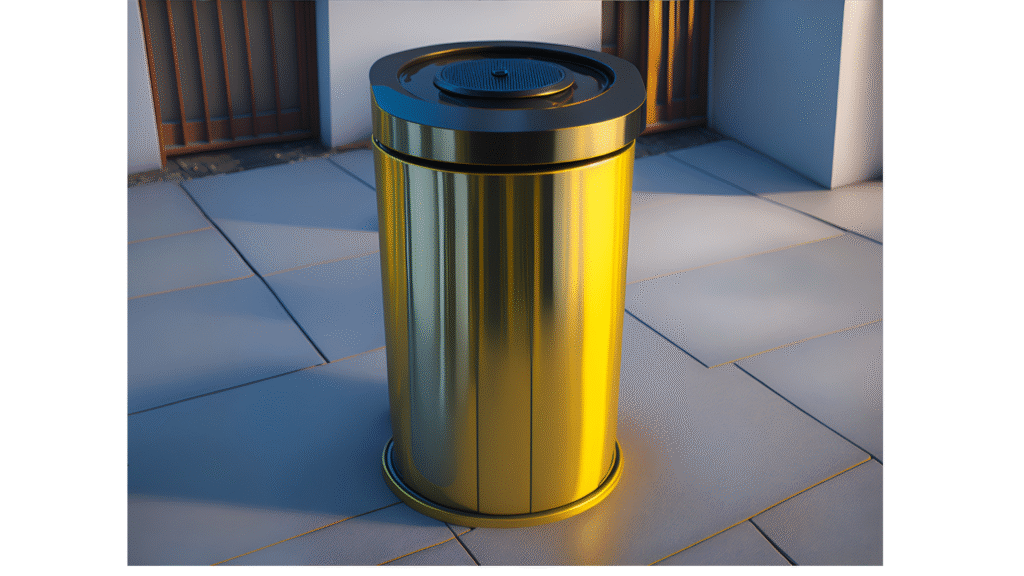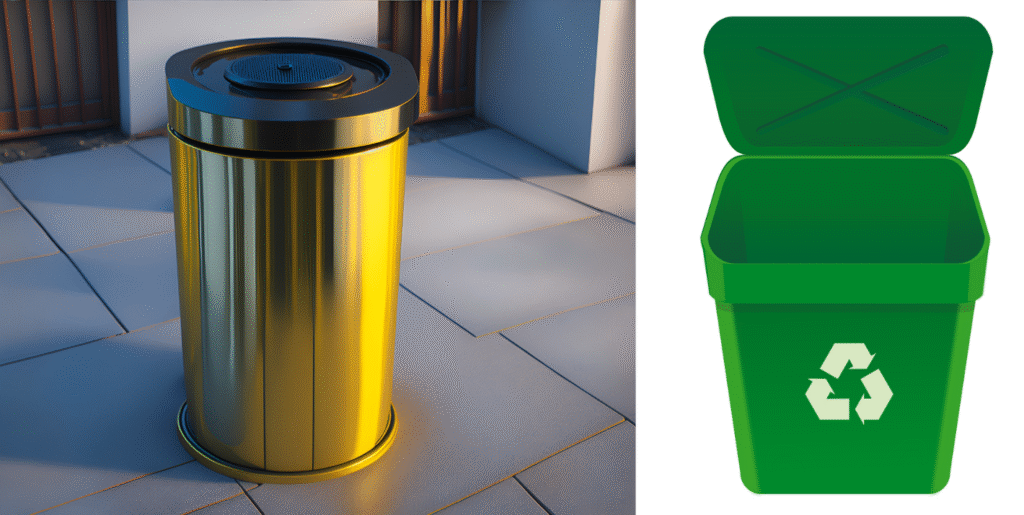When we think of the kitchen, the first thing that comes to our mind is the cooking or eating utensils or stove. But there is one thing in our homes that we do not pay attention to and that is the kitchen dustbin. It keeps our homes clean and tidy. Whether you live in New York or a cozy Indian home in Mumbai, the kitchen dustbin is a small, inexpensive but important part of everyday life. We are going to talk about it today. Let us now talk in depth about how important this simple item is, why it is so important, what are the different types available, and how to select the best kitchen dustbin for your home.

Why Is a Good Kitchen Dustbin Important?
The kitchen is a special room in the home—it’s where food is prepared, memories are shared, and families gather. But it’s also where the most waste comes from: vegetable peels, milk, yogurt wrappers, leftovers, and more.
Without a proper dustbin:
- Odors quickly spread.
- Pests like flies, ants, and even rodents can become a problem.
- Hygiene takes a hit — especially in warm climates.

In both the U.S. and India, where food culture is diverse and rich, kitchen waste is inevitable. So, having the right dustbin is essential for health, cleanliness, and convenience.
Types of Kitchen Dustbins
Today’s kitchen dustbins come in all shapes, sizes, and features. Here are the most popular types:
1. Pedal Bins
A favourite in both Indian and American kitchens, pedal bins open with a foot press. No need to touch the lid — super hygienic, especially when your hands are messy.
Best For: Homes that value hands-free convenience.
2. Swing Lid Bins
These bins have a lid that swings both ways when you push on it. They’re common in Indian kitchens and are known for their simple design.
Downside: Can sometimes leave gaps that let out smells.
3. Pull-Out Bins (Under Sink)
Common in modular American and luxury Indian kitchens, these bins are hidden inside cabinets. You pull them out like a drawer.
Best For: Stylish kitchens where aesthetics matter.
4. Touchless Sensor Bins
These high-tech bins use motion sensors to open the lid automatically. They’re becoming popular in the U.S. and in upscale Indian households.
Pros: Maximum hygiene, sleek look.
Cons: Expensive and needs batteries.
5. Dual-Compartment Bins
5. Dual-Compartment Bins
Want to separate wet and dry waste? These bins come with two compartments — perfect for Indian kitchens following waste segregation rules or eco-conscious American homes.
Ideal For: Cities with strict waste segregation laws like Mumbai or San Francisco.
Size Matters – Choosing the Right Capacity
Size is crucial when it comes to kitchen bins.
- For Small Families (1-3 members): 10 to 20 litters is usually enough.
- For Medium Families (3-5 members): 20 to 30 litters works well.
- For Large Families or Joint Families: 40 litters and above is ideal.
In the U.S., kitchens are often larger and might accommodate a 50-liter or even a dual-bin system. In Indian homes, especially in apartments, space is tighter, so compact, vertical bins are often preferred.
Material Discussion – Plastic vs Stainless Steel
Kitchen dustbins are usually made of plastic or stainless steel. Here is a general comparison:

| Feature | Plastic | Stainless Steel |
| Price | Budget-friendly | Expensive |
| Weight | Lightweight | Heavier |
| Durability | Moderate | Very Durable |
| Looks | Simple | Sleek and Modern |
| Odor Control | Less effective | Better |
For Indian kitchens with spicy or oily food waste, stainless steel can help with Odor control. For American homes, where design often matters, steel can also complement a modern kitchen.
Smell Control and Cleanliness Tips
Let’s face it — no one wants a stinky kitchen.
Here’s how to keep your bin fresh:
- Use garbage liners to make disposal easy.
- Empty it daily, especially for wet waste.
- Clean it weekly with hot water and disinfectant.
- Sprinkle baking soda at the bottom to absorb smells.
- Use lids to contain the odor — always a good idea in warm climates like India or during summer in the U.S.
Eco-Friendly Dustbin Habits
As we all become more environmentally aware, it’s important to think about how we use our bins.

Some green tips:
- Segregate waste — wet, dry, and recyclables.
- Compost organic waste — vegetable peels, fruit skins, etc.
- Use biodegradable liners instead of plastic bags.
- Say no to mixing glass or metal in organic waste.
In India, several municipalities (such as Bangalore and Pune) have mandated waste separation. In the US, many cities actively encourage composting and recycling.
Placement of Dustbin in Kitchen – Where should it be placed?
Where you place the bin can make a big difference in daily use.
- Under the sink: Hidden and convenient.
- Near the cooking area: Easy access while chopping or cooking.
- Outside the kitchen door: In some Indian homes, people keep the main bin just outside the kitchen to keep the smell away.
Just make sure it’s accessible, not in the way, and not exposed to direct sunlight (which can worsen odors).
What Brands Are Popular?
In India:
- Milton
- Cello
- Nayasa
- Kuber Industries
- Bathla
In the U.S:
- Simplehuman
- Rubbermaid
- iTouchless
- Glad
- Amazon Basics
Look for bins with good reviews, durable build, and practical features — don’t just go by looks!
Final Thoughts: Don’t Underestimate Your Dustbin
The kitchen dustbin may not be attractive, but it is an everyday item that needs more attention than it gets. A well-chosen dustbin can improve your kitchen hygiene, reduce odors and even help you live a more eco-friendly lifestyle. Whether you live in the crowded city of Delhi or the suburbs of Texas, the right dustbin can quietly make your life a lot cleaner and simpler.
Tell Us — What Kind of Kitchen Bin Do You Use?
Do you prefer a touchless bin, a simple swing lid, or an under-sink pullout? Share your thoughts in the comments!
I have a blog on “Wash Basin” and Toilet Commode Guide you can visit that too if you want.

